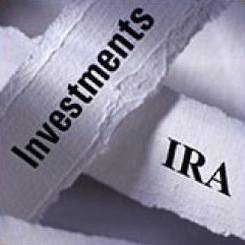This is the final of a four-part article series meant to help you start planning for retirement. This article provides information on the most common investment options for your retirement savings.
Diversify when you invest
In the other articles of this series, you developed a retirement plan, estimated how much you’ll need in retirement savings, and learned a few tips to save more for your retirement fund. Now that you have freed up a few extra dollars, where are you going to put them? Luckily, there are a number of options available to you.
Following is a brief overview of some of the more common retirement investment options. Talking with your banker, the benefits department of your company, or a financial advisor can help you decide which is right for you. In general, the key is to diversify and take advantage of as many options as you can as they all offer their own pros and cons.
401(k) Retirement Fund
Offered through an employer, a 401(k) is a retirement fund that allows you to contribute a percentage of income from your paycheck using pre-tax dollars. 401(k) plans offer many advantages, which can include an employer match, the ability to control how your money is invested by choosing from a spread of mutual fund options, and the benefits of a tax-deferred account.
401(k)s do have some restrictions, however. Usually you can’t contribute to your employer’s plan until you’re “vested,” contribution limits exist (in 2010, those under the age of 50 can contribute up to $16,500 and those over 50 can contribute up to $22,000), you will pay taxes on your contributions and gains when you withdraw your funds after retirement, and if you withdraw from your plan before age 59½, you could face costly penalties.
But even with these restrictions, 401(k)s provide a great route for saving. If your employer offers this plan, take advantage by at least investing enough to get the full matching amount that your company offers.
Individual Retirement Accounts (IRAs)
Like a 401(k), an IRA is a tax-deferred retirement savings account made up of a fund of stocks, bonds, mutual funds, and other assets. However, IRAs are not offered through the workplace; you open an IRA on your own and must set up your own way for making contributions—which are limited. (If you’re under the age of 50, your 2010 contributions to an IRA are capped at $5,000; if you’re over 50, your cap is $6,000.) There are several types of IRAs; the two most common are the Traditional and the Roth.
Traditional IRA:
With a Traditional IRA, nearly anyone with earned income can contribute. You pay taxes on your funds when you withdraw money in retirement; however, your contributions may be tax deductible, depending on your income and whether your workplace offers a retirement plan. You must start withdrawing money by the time you reach age 70½. And, if you are under the age of 59½ and begin withdrawing funds, you will be charged a penalty—in addition to paying regular income taxes.
Roth IRA:
With a Roth IRA, you contribute post-tax dollars—but your funds are then tax-free when you withdraw money in retirement. Roth IRAs are more flexible if you need to withdraw some of your money before retirement age and allow you to leave the money in for as long as you want; you do not need to begin withdrawing at a certain age, which enables your funds to continue growing. However, there are income limits for contributing to a Roth IRA.
Tax-deferred annuity
A tax-deferred annuity is one more vehicle to help you save for retirement. An annuity is a form of contract between you and another party, usually an insurance company or financial institution. You pay a specific amount of money over a certain period of time and, once you have completed your payments, you start receiving benefits from your investments.
Like the 401(k) and IRA plans, you can take advantage of tax-deferred savings and have access to a range of funds. Tax-deferred annuities also offer the advantage of having virtually no contribution limits and do not require minimum distributions at age 70½ (on after-tax contributions). But buyers beware: annuities can be known for their high expenses.
Pension
Pensions are a dying breed as a means for retirement savings. Pensions are offered and maintained by employers to provide you with a fixed payout when you retire. Your payout typically depends on your salary and how long you worked for your employer. When you retire, you have the option to receive a lump-sum payout or a monthly payment.
Take advantage of the IRS retirement credit
The Retirement Savings Contribution Credit, known as the Savers Credit, is available for those making eligible contributions to an employer-sponsored retirement plan, such as a 401(k), or an IRA.
There are certain requirements and income limits to be eligible for the Savers Credit. Click here to learn more.
This article contains general information. Individual financial situations are unique; please, consult your financial advisor or tax attorney before utilizing any of the information contained in this article.
Related Articles
- Retirement Planning: Start the Process!
- Retirement Planning: How much do I need to save?
- Retirement Planning: Tips for Saving
- Pensions: How To Collect Your Payout
- Six Steps To Create And Manage A Budget
- Tips To Manage Your Money When Your Married
- 7 Steps to Manage Your Money When You Have Kids
- What is an IRA?
- What is a 401k plan?
- Is a Roth IRA conversion right for you?
- Investing for beginners: The basics of how to invest your money
- Estate Planning: Why You Need A Will
- Estate Planning: Should You Create A Trust?
- Estate planning: Tax Planning For Your Estate
 Print
Print Email
Email










